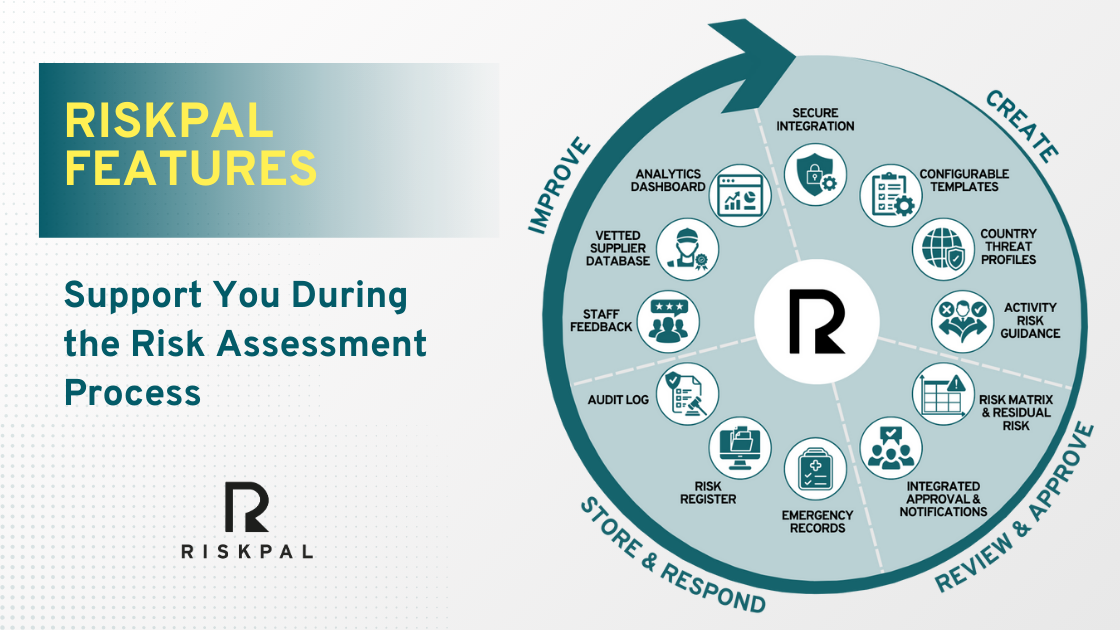Navigating Personal Data in Travel Risk Assessments
Collecting key personal data from workers and business travellers has long been essential for ensuring their safety and enabling effective emergency responses. Traditionally, employers would gather information such as date of birth, next of kin, vaccinations, and allergies.
However, as the concept of duty of care has evolved and the world has grown more complex, the range of personal details required to safeguard individuals has expanded. It is now increasingly common for organisations to request that individuals volunteer information about their ethnicity, religion, gender, sexual orientation, disability status, and pregnancy.
This sensitive data falls under what is known as protected characteristics.
Protected characteristics are personal traits that the law recognises to safeguard individuals from discrimination.

The Importance of Protected Characteristics in Risk Assessment
Risk assessments should not just examine threats related to physical safety, digital intrusion, geographic location and mental well-being, but also factor in the individuals themselves and their personal traits. Understanding this data enables organisations to implement tailored safety measures.
Consider the implications of sending an employee to a country where LGBTQ+ individuals face criminal penalties or discrimination could expose them to unnecessary danger. Similarly, sending an individual with mental health concerns to a high-stress environment, could exacerbate their condition.
In emergencies or crises, having accurate information about travellers’ protected characteristics allows for a more effective response. Knowing details such as age, health conditions, or dietary restrictions ensures appropriate medical or logistical support is provided.
Additionally, understanding the cultural backgrounds of travellers enables organisations to offer more culturally sensitive assistance and avoid potential misunderstandings. Considering diversity factors also enhances inclusivity and accessibility, enriching the travel experience for everyone involved.
The Challenge of Managing Protected Characteristics Data
Collecting, managing, and storing data on protected characteristics presents significant challenges for organisations:
- Trust: Acquiring this sensitive information requires a high level of trust. Employees may be reluctant to disclose personal details due to fears of discrimination or misuse of their data.
- Legal Compliance: Organisations must navigate complex legal requirements, such as obtaining explicit consent and ensuring that data is only used for its intended purpose. Missteps in data management can lead to serious legal consequences, including fines for non-compliance with the General Data Protection Regulation (GDPR) or similar data protection laws globally.
- Secure Storage: Storing this sensitive information securely requires robust technical solutions. In the event of a data breach, the exposure of protected characteristics could cause severe harm to individuals, leading to reputational damage for the organisation and potential legal liability.
Balancing the need for comprehensive risk assessments with the obligation to maintain employee privacy makes managing this data an ongoing pain point for many businesses.
How to Incorporate Protected Characteristics into Risk Assessments
To effectively incorporate protected characteristics into risk assessments, begin by identifying the diversity factors relevant to your organisation. These may include demographics such as race, ethnicity, gender, age, disability, religion, sexual orientation, or other protected traits.
To address staff concerns about potential misuse or discrimination, outline the specific risks linked to travel in certain regions, and provide employees with a confidential screening form to identify any protected characteristics that could increase their vulnerability. This data can then be used to categorise risks (low, medium, high) and develop tailored safety plans that prioritise both individual protection and privacy.
Lastly, ensure that the collection and handling of this sensitive data is conducted with empathy and compliance. Risk managers should follow these key steps to safeguard data and protect individuals effectively:
Transparency and Consent
Be transparent about why you’re collecting sensitive data. Clearly explain its purpose and ensure individuals give explicit consent. Make it clear how the information will be used and shared to mitigate potential risks, particularly in high-risk regions.
Data Minimisation and Retention
Collect only the necessary data to achieve your objectives and ensure the information is used solely for risk assessment purposes. Store data only for as long as necessary and dispose of it securely when no longer needed.
Data Security and Access Control
Implement strong security measures to protect sensitive data from breaches or unauthorised access, following regulations such as GDPR, by keeping protected characteristics data secure and separated from general records. Limit access only those directly involved in risk management or health and safety and share information only when absolutely necessary.
Ongoing Monitoring and Review
Continuously monitor and review your risk assessment processes and how you manage protected characteristics to ensure they are effective and non-discriminatory. Regularly update risk management strategies in response to changing legal regulations and new risk factors.
By following these steps, risk managers can ensure they comply with data protection regulations, protect employee privacy, and provide tailored safety measures that account for diverse risks without crossing ethical lines.
How RiskPal Can Help
RiskPal offers a solution to help organisations manage these complexities. Our platform allows you to build risk management processes that are fully compliant with data protection laws, including the GDPR. We enable secure, transparent collection and storage of sensitive information, ensuring that it is only accessible by authorised personnel and deleted when no longer needed.
With Riskpal, you can tailor risk assessments to specific demographics and personal needs while protecting your employees’ privacy. As an ISO 27001-certified organisation, we follow strict international standards for information security management. As a SAAS provider, we have implemented robust measures to protect your sensitive data – giving you peace of mind and confidence in RiskPal’s security.
Conclusion
By incorporating diversity data into your risk assessments, you can create a safer and more inclusive workplace. Remember to handle this sensitive information with care, comply with data protection regulations, and use it to drive positive change within your organisation.
Learn more about how RiskPal can support you in navigating personal data in risk assessments at RiskPal.com, or contact us for more information.



